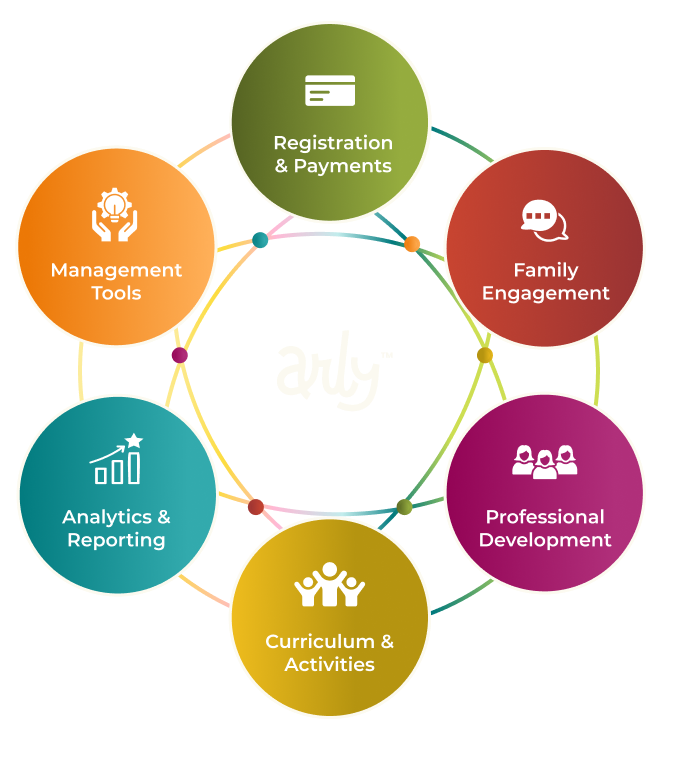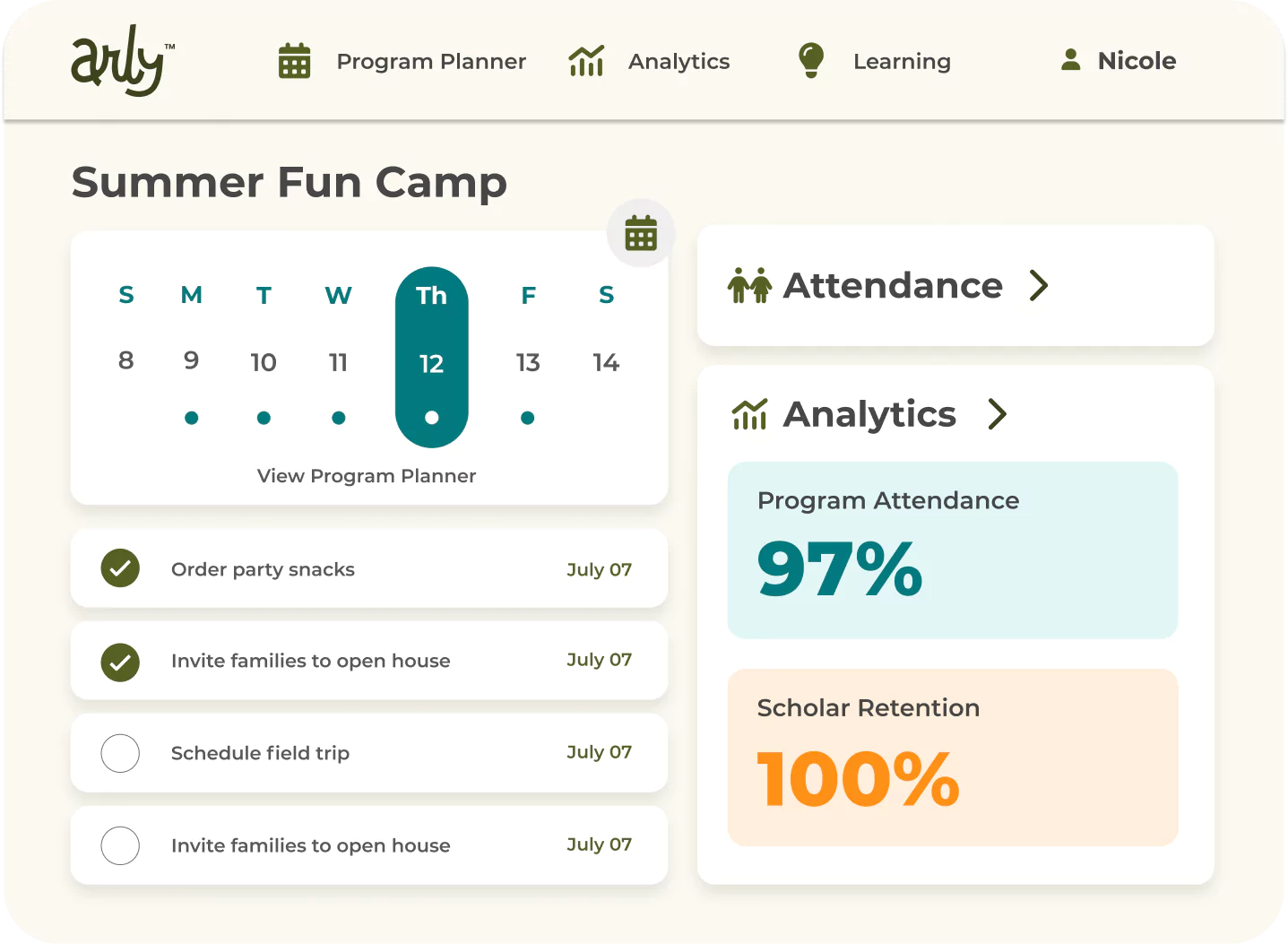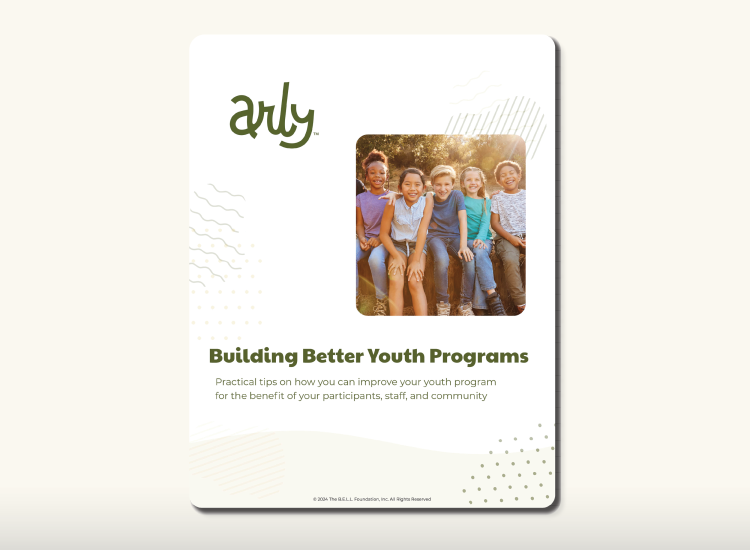How to Solidify Your Partnership Strategy (Including Examples)
By Arly Communications on October 3, 2022
We hosted a roundtable discussion to learn how community organizations and schools are partnering up to fulfill their mission of helping kids and families. Let’s look at some experience-backed insights into what makes a solid partnership strategy, including how to effectively identify potential collaborators and enjoy a lasting and impactful connection.
Exploring Partnership Opportunities
Schools and youth programs can form meaningful partnerships with a variety of organizations. There may be potential partners right there in your community. Let’s look at examples of some school and community partnerships:
- School district: Community-based organizations should start by looking to their local school district to see whether they can form a partnership. These are some of the most valuable partnerships when you want to maximize your impact on the community.
- Parks and recreation department: Your parks and recreation department is an excellent potential partner for outdoor activities. See if they’re willing to host special events or send out a park ranger to talk to kids about their natural environment or the parks system.
- Public library: Your public library can be a great resource for youth programming. For example, the San Bruno Park School District in California partnered with local librarians, who read to the kids weekly.
- Police and fire departments: Your local law enforcement officials and other first responders may be eager to support your program by connecting with kids in person, sharing information about how they serve the community, or simply reading to kids.
- National youth organizations: National youth organizations like 4-H are also great possibilities to explore. You may find that you can start a local chapter and make it part of your programming or come together and combine resources for field trips or other events.
- Local nonprofits: Look to local nonprofits as potential partners for both funding and programming. For example, you may be able to teach kids civic responsibility by having them volunteer for a charity in your community, and the charity may be able to sponsor your program for the betterment of the community.
- Local colleges and universities: Connecting with higher ed institutions in your community can be a great move. College students in education or social work may be able to serve as volunteers to gain valuable experience working with kids and potential course credit. Meanwhile, kids in your program can gain positive exposure to the idea of higher education and start to consider it for their future.
- School alumni: Schools should consider reaching out to alumni to see whether they want to get involved in youth programming. Alumni can provide valuable donations or take time to share with students how they turned their education into a fulfilling career.
Schools and youth programs can provide a richer experience for kids by collaborating with organizations that share the same goals and values and can bring something unique to the table. In other words, you and your partner should be well aligned and able to collaborate effectively, with each party contributing something helpful.
Learn how The Boys & Girls Clubs of Providence enjoyed a successful partnership with its local school district in our case study.
Community Partnership Best Practices
Once you’ve identified the right partners, you need to approach forming a partnership the right way. To enjoy a lasting and meaningful partnership, follow these quick tips from our panel:
1. Think long-term about the relationship.
According to Joe Manzoli, Chief Operating Officer of the YMCA of Greater Nashua, you shouldn’t base the relationship on a single person. Seek to build a relationship with the entire organization or school so that even as people change, the partnership remains strong.
2. Be open-minded about the fit.
Just as you should be willing to see potential partners in unlikely places, you should also be ready to say no to potential partners. Ensure your organizations and goals are compatible and be willing to acknowledge if you’re not a good fit.
3. Get to know their needs.
An important aspect of any partnership strategy is understanding the ecosystem of your potential partner so you can have an informed discussion about their needs. This includes knowing their goals for youth programming and their budgetary limitations or preferences.
4. Make it a win-win.
Seek to help your potential partner solve problems or meet their goals as they help you do the same. For example, Pauahi McGinn, Director of Child Development for San Bruno Park School District, wanted kids to have a more positive view of law enforcement, so she reached out to the local police department. The department was happy to get involved and thanked the school for collaborating with them to achieve this mutually beneficial goal.
5. Keep it real (and respectful).
Open dialogue and transparency are essential to a meaningful relationship, so make plenty of time for conversations with your potential partner to understand where they’re coming from and develop a shared vision. Remember to have grace and stay humble as you work together.
Watch the Webinar to Learn More!
The right partnership can make a tremendous difference for your organization and community. With such valuable benefits, school and community partnerships are well worth exploring in greater detail. Want to learn more about what goes into a solid partnership strategy from school and youth programming leaders? Watch the on-demand webinar:






%20(57).png)

%20(54).png)
%20(51).png)
%20(52).png)